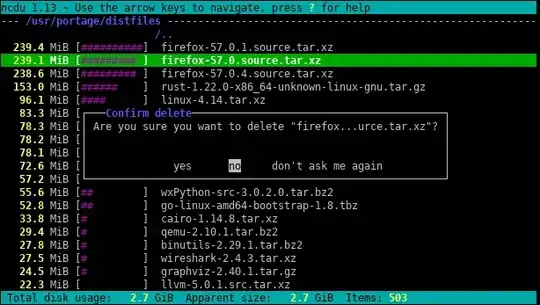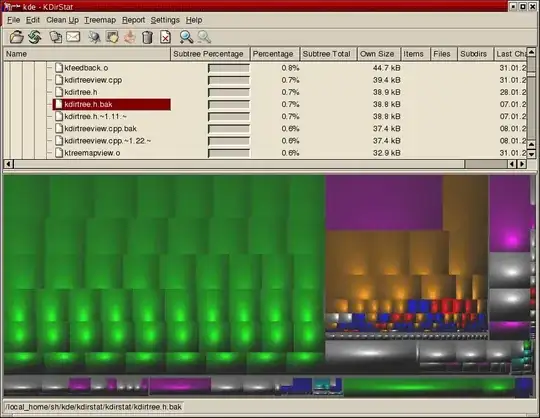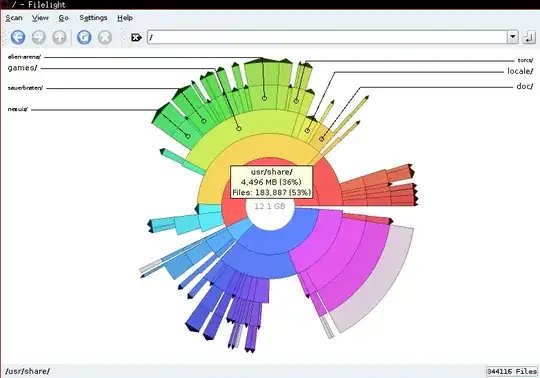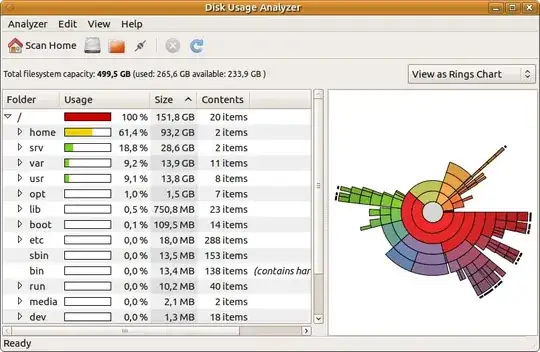I'm looking for an application which allows me to see what is consuming the most disk space and also to delete the files from there.
-
I'm voting to reopen the question because it has a different starting point and scope than the linked question. I know there will be a significant chunk of overlap in the suggested tools and answers but that's not enough imho; e. g. the author of the linked question already knows Baobab but failed to run it as super-user. – David Foerster Mar 28 '17 at 08:00
7 Answers
My personal favorite is GNOME Disk Usage Analyzer (baobab):
You can install it with
sudo apt install baobab
Select any file from the table on the left side to move it to trash on right click.
-
It seems installed in Gnome. How do you get that gradient look? And can't you delete files graphically with it? – empedokles Sep 06 '15 at 12:01
-
1@empedokles no, you can't delete files and I don't know about the gradient. That's just a screenshot I found online. – terdon Sep 06 '15 at 12:02
-
This come pre-installed, search
diskin the dash, in Ubuntu and you can delete files by right clicking them and choosingmove to rubbish bin– Mark Kirby Sep 06 '15 at 12:10 -
@empedokles I stand corrected, it seems like you can delete files. I've never used it that way though. – terdon Sep 06 '15 at 12:12
-
Seems to work on the left, but not on the graphical side. Disks brings up something else (a partition manager). – empedokles Sep 06 '15 at 12:16
-
Diskis just a search termdisk usage analyzeris one of the results. @empedokles – Mark Kirby Sep 06 '15 at 12:21 -
I see, it's called different in German and something else jumped up. It's a pitty that Ubuntu uses German translations, it makes things more complicated IMO. – empedokles Sep 06 '15 at 12:57
-
There is a fully rewritten version of KDirStat, by the same author, named QDirStat. Fast, customizable, using Qt5, desktop-agnostic (not depending on KDE components), and showing a squared view rather than concentric circles, which I personally find clearer. There is a ppa available for the installation.
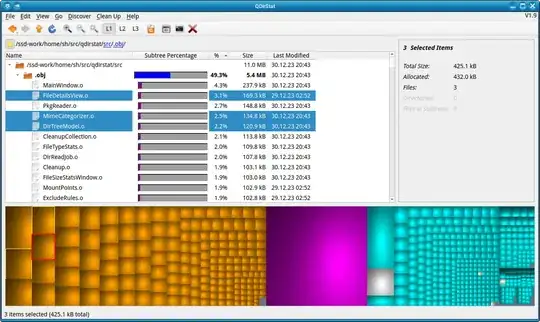
- 168
If you happen to be on the command line, you can use: ncdu Ncdu is a disk usage analyzer with an ncurses interface. It is designed to find space hogs on a remote server where you don't have an entire graphical setup available, but it is a useful tool even on regular desktop systems. Ncdu aims to be fast, simple and easy to use, and should be able to run in any minimal POSIX-like environment with ncurses installed.
- 10,542
If you're using KDE, I'd recommend filelight
You may install it using:
apt-get install filelight
It is very similar to GNOME baobab recommended by terdon.
The wikipedia entry says:
Filelight is a KDE graphical disk usage analyzer, part of the KDE Utils package, which uses the sunburst chart technique to display disk usage. Instead of showing a tree view of the files within a partition or directory, or even a columns-represent-directories view like xdiskusage, it shows a series of concentric pie charts representing the various directories within the requested partition or directory and the amount of space they use1 (this method being known as a sunburst chart, ring chart, or multilevel pie chart).
A user may also click on the pie chart segment representing a particular directory, and repeat the analysis for that directory,2 right click that segment to open a file manager or terminal emulator in that location, or copy to clipboard or delete the directory, and they may right click the segment representing a file to open it, copy it to the clipboard, or delete it.
- 2,823
MATE Disk Usage Analyzer (mate-disk-usage-analyzer) may be used too. It is installable as part of MATE utilities package
sudo apt-get install mate-utils
and looks like GNOME Disk Usage Analyzer - see screenshot below
- 99,918


